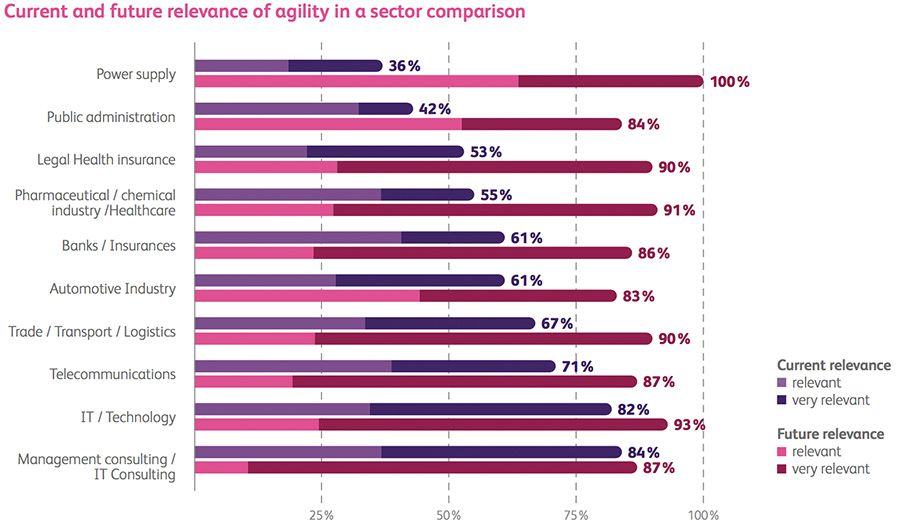Agile work helps companies efficiently adapt to pandemic enterprise

In the face of the Covid-19 pandemic that left unprecedented numbers of employees working from home, seven out of ten companies told a new survey that agile organizational practices have helped them adapt faster. This enabled more than 60% of agile companies to maintain their pre-crisis performance last year.
In the past, companies favored stability as a success factor. Unfortunately, the constant change in modern life means that digital disruptions, economic uncertainty and even a global pandemic mean that this is no longer a practical base from which to operate. Instead, companies are increasingly looking to transform their operating models to drive agility and quickly adapt to evolving trends in their market.
A new study by BearingPoint showed that companies that have moved to agile operating models are better equipped to cope with last year’s chaotic business environment. Independent employees, an adaptable culture and agile network structures enable agile organizations to survive times of crisis. This is reflected in 82% of the 372 companies surveyed by BearingPoint, who found that quick reactions to new conditions were a key benefit of organizational agility.
Meanwhile, 71% of organizations said agility means employees can more easily adapt to self-employed or remote work – a major boost given nearly a year of working from home during the pandemic lockdown. As a result, 61% of agile companies stated that they were able to maintain continuous delivery of results during a crisis – and weathered the storm of the past 12 months better than their competitors.
However, not all of the advantages of agility have been used equally by the companies. Companies that managed to revamp their organization to become agile top-down were the ones that enjoyed the greatest benefits of working agile, rather than those that still retained traditional structures.

A networked organization is one that is interconnected by informal networks and the requirements of the task. An agile network organization therefore prioritizes its “soft structure” of relationships, networks, teams, groups and communities instead of reporting lines. In this context, BearingPoint found that agile network organizations achieved the best results from agile work.
Greater improvements through agile transformation were noted particularly in terms of increased flexibility, with 56% of network organizations seeing an increase in these conditions compared to 47% of non-network organizations. Similarly, network organizations have enjoyed faster speeds and greater customer focus, as well as increased innovation – all keys to keeping their business running at a time when customers are scrutinizing every purchase they make.

Even among companies that may not have previously viewed agility as a priority, the pandemic appears to have led many to realize its importance. BearingPoint made this the clearest, finding that only 36% of respondents in the utility sector said agility is relevant now, but 100% of respondents said it was either relevant or very relevant for the future.
Similarly, both public administration and statutory health insurance have drastically changed their opinion on the relevance of agility, with around half of the respondents each proving to be relevant by more than 80%. At the same time, many of the previously converted people are more convinced of the importance of agility. In management and IT consulting, for example, the number of supporters of agility has currently increased by around a third.
The BearingPoint partners Andreas Mitter and Julia von Spreckelsen commented on the results as follows: “In our transformation and coaching projects, we have seen many who strongly promote agility towards the outside world. A look inside often shows that some still follow traditional ways of working and thinking. The current Covid-19 pandemic draws attention to the low adaptability of organizations. For others, however, it is a confirmation of the need to rely even more on the agile mindset and to further develop agility within the company. “
